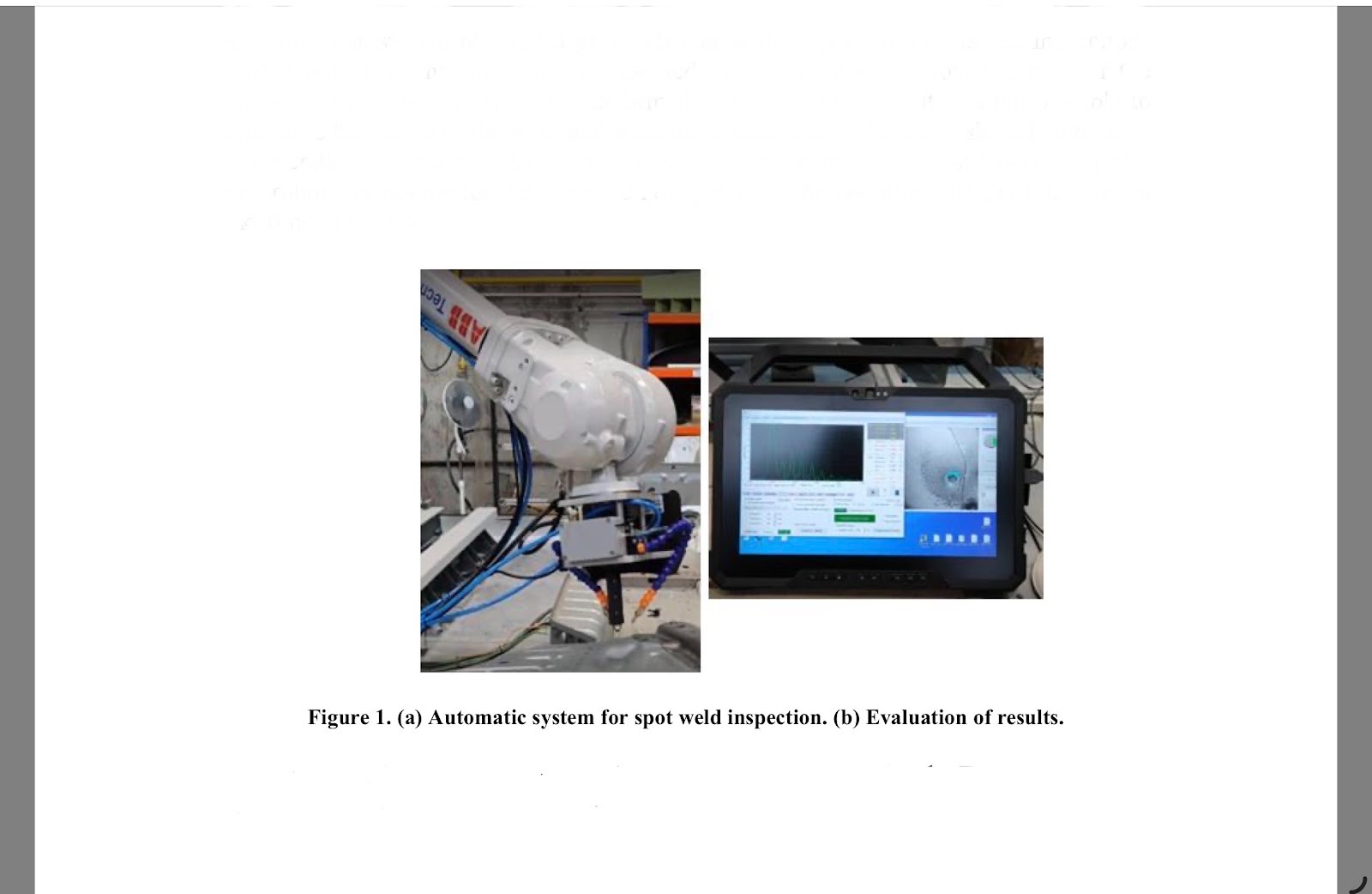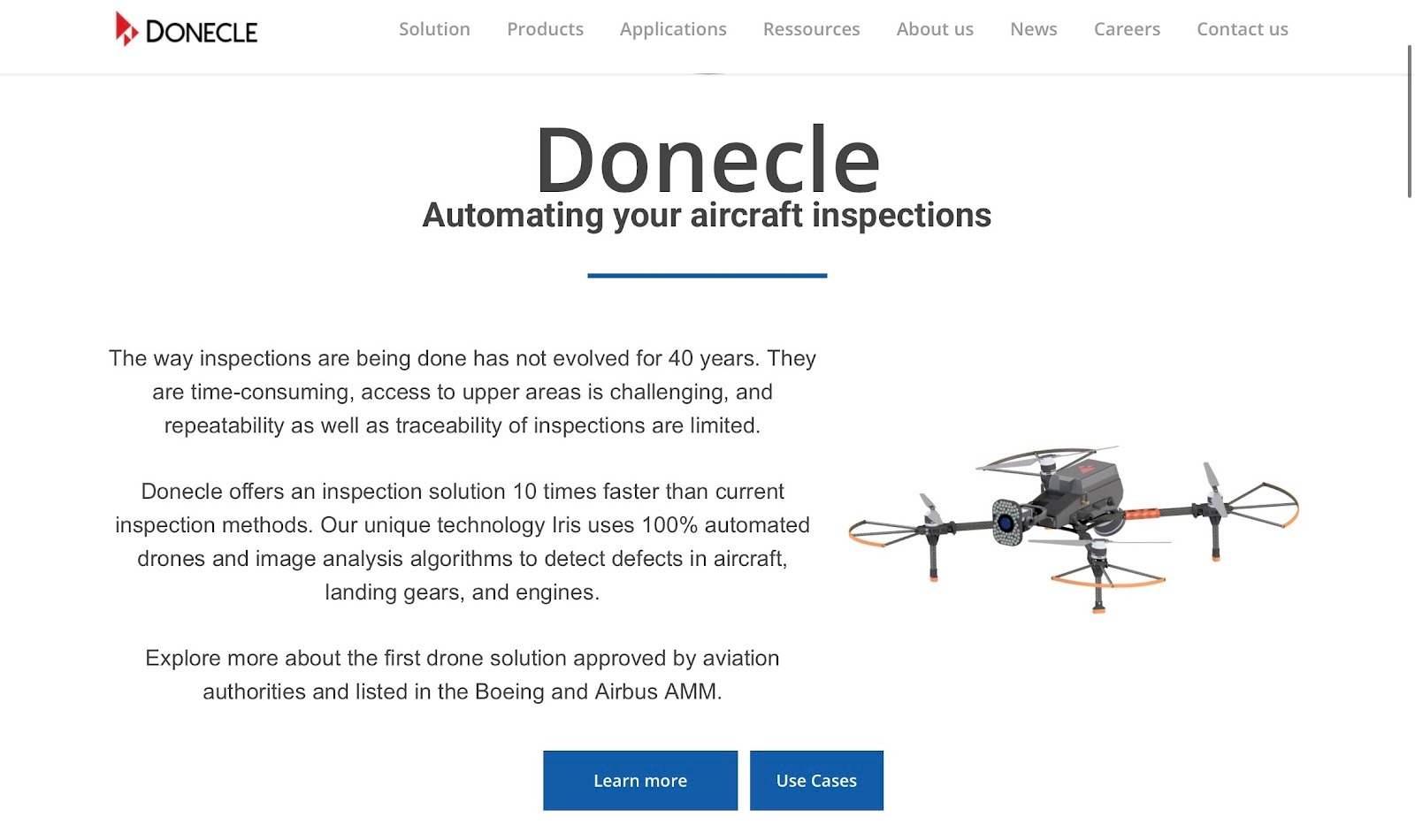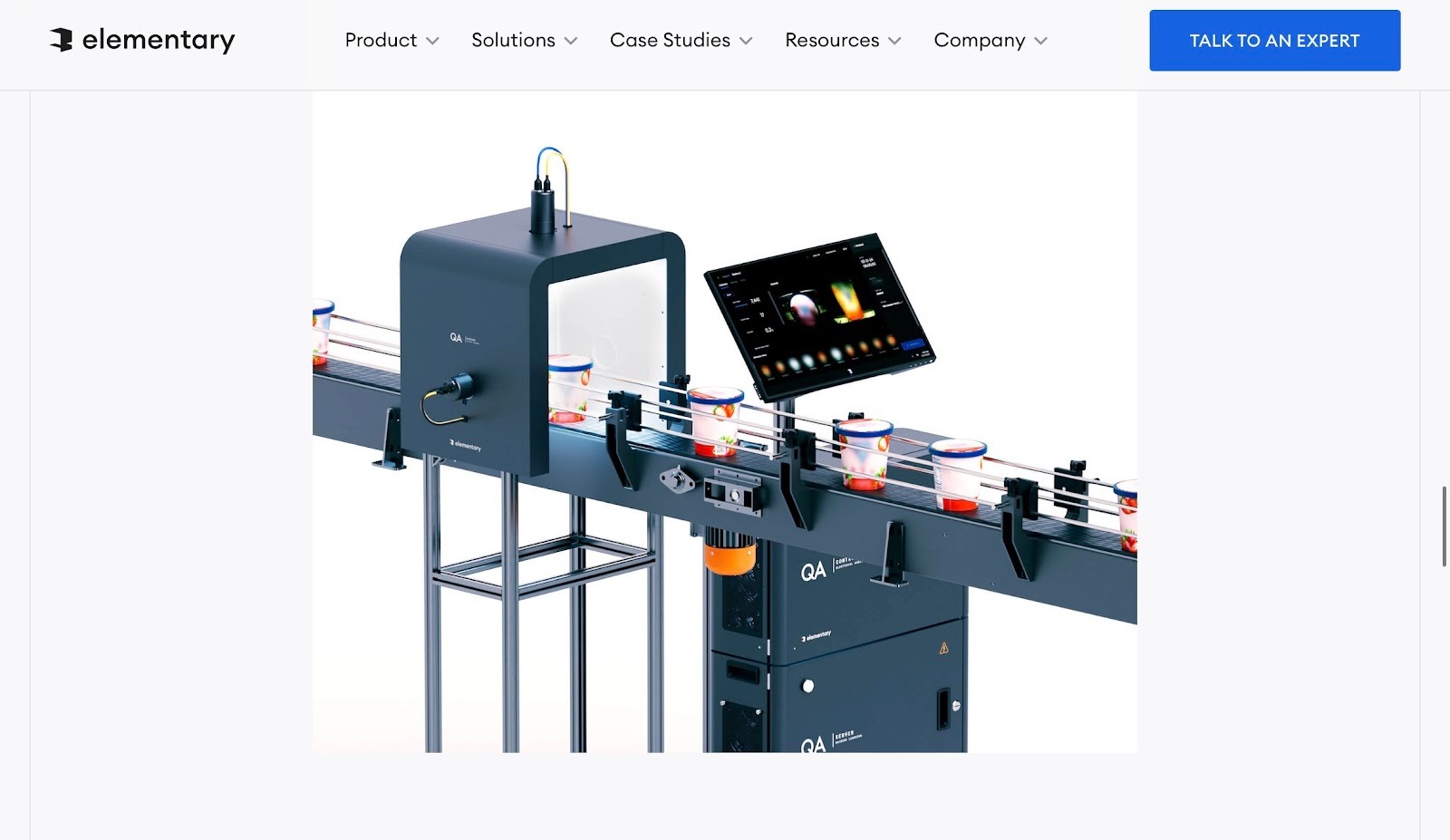Robotic inspection has become manufacturing's extra set of eyes as factories push higher speeds and customers demand perfection.
Visual inspection robots scan surfaces for scratches, cracks, microscopic defects, and misalignments. Industrial inspection robots go deeper, measuring welds, validating assemblies, and detecting internal faults invisible to human inspectors.
The result is faster, more consistent quality control that frees human workers for complex problem-solving while robots handle repetitive precision tasks. Automated inspection is the baseline for staying competitive.
Understanding robotic inspection
Understanding robotic inspection starts with the stack: robots, vision, sensors, and AI working together to check quality automatically. Unlike static cameras or manual checks, robots can move around parts, adjust angles, and capture data with speed and repeatability.
Broadly speaking, there are two levels of capability. A visual inspection robot focuses on surface flaws such as scratches, dents, or misalignments. Industrial inspection robots extend to more complex tasks like weld checks, assembly verification, and dimension measurement.
This work is carried out on different platforms, such as:
- Articulated arms for production line inspection
- Drones for areas that are unsafe or hard to reach
- Mobile robots for scanning large machinery or facilities
Core technologies and how they enable visual and industrial inspection robots
The core technologies that enable visual and industrial inspection robots are vision systems, advanced sensors, artificial intelligence, and connectivity.
Each of these technologies plays a different role in turning robots into reliable tools for quality control.
1. Vision systems
Vision systems form the primary layer of inspection. Basic 2D imaging is used to check flat surfaces for scratches, dents, or missing labels. 3D vision captures depth and shape, making it possible to measure gaps, detect deformations, or verify assembly accuracy.
In advanced setups, thermal cameras reveal heat leaks and electrical faults. Hyperspectral imaging catches material differences that standard cameras miss.
2. Sensors
Sensor arrays expand the scope beyond what cameras alone can achieve. Ultrasonic sensors are widely used to measure thickness and identify voids inside materials, especially in aerospace and automotive manufacturing.
LiDAR maps large structures at high resolution, so robots can scan tanks, pipelines, and heavy machinery with precision. Infrared sensors detect structural weaknesses or heat inconsistencies, which are critical in power plants and electronics factories.
Together, these tools give robots the ability to look beneath surfaces, not just at them.
3. Artificial intelligence and machine learning
Artificial intelligence and machine learning make inspection robots adaptable. Traditional rule-based systems check for predefined errors, but they often fail when new or unusual defects appear. Machine learning models trained on large datasets can recognize patterns, spot anomalies, and continuously improve accuracy.
This reduces false positives, helps uncover defects earlier, and enables predictive inspection, catching problems before they lead to failures.
4. Connectivity and IIoT integration
Connectivity and IIoT integration keep inspection data in the loop, feeding MES and ERP in real time, so plants act on defects immediately. This creates a digital trail of every part, useful for recalls or compliance audits.
It also allows manufacturers to act immediately on detected defects. When paired with automated quality control systems, inspection robots can even trigger corrective actions, such as diverting a faulty product off the line without human intervention.
5. Kinematics and mobility
Finally, robot kinematics and mobility determine how effectively inspections are carried out. An articulated arm with high repeatability can handle precision tasks like checking solder joints on circuit boards.
Mobile robots with long battery life can patrol factory floors or warehouses, running continuous inspections without downtime. Drones bring flexibility in inspecting roofs, storage tanks, or infrastructure where human access is unsafe.
Use cases of industrial inspection robots
Use cases for industrial inspection robots show where automation delivers measurable quality and safety gains. From electronics to aerospace, these robots are delivering measurable results in real factories and facilities.
Electronics manufacturing
Electronics production demands micrometer accuracy, where even a single soldering defect can cause mass failures. Visual inspection robots equipped with high-resolution 3D cameras and AI anomaly detection are now standard on high-volume lines. This reduces false negatives and ensures product reliability.

For instance, DarwinAI’s Deep Visual Quality Inspection (DVQI) platform has been deployed in electronics assembly to boost defect detection while cutting inspection times. By integrating AI into robotic inspection, manufacturers meet growing consumer demand without sacrificing quality, while also creating a digital record of every board tested.
Automotive production
Automotive plants depend on inspection robots to ensure weld integrity, panel alignment, and paint finish. Unlike human inspectors, robotic systems deliver precision at line speed, verifying thousands of joints per shift.
Automotive OEMs deploy robotic spot-weld inspection using ultrasonics and 3D imaging on body-in-white lines to verify weld penetration and consistency at line speed.

Vision robots also flag scratches, dents, and paint blemishes before cars leave the line, reducing the chance of costly rework or recalls. The outcome is higher productivity, stronger compliance with safety standards, and vehicles that meet customer expectations for both durability and appearance.
Aerospace and aviation
Aerospace relies on inspection robots to balance strict safety rules with the need to keep aircraft in service. French company Donecle has developed autonomous drones that inspect aircraft exteriors in under an hour.
The drones carry high-resolution cameras and laser positioning systems, detecting dents, lightning strike marks, and paint irregularities with precision.

Airlines and MROs, including Viva Aerobus, now use Donecle’s system to reduce inspection times and maintain digital traceability of every defect. In a related development, Donecle partnered with 8tree to integrate the dentCHECK tool into drones for precise dent measurement capabilities.
Food and beverage
High-speed beverage lines require inspection at a pace no human can sustain. Now, high-speed lines use visual inspection robots and visual AI to confirm fill level, cap seal, and label placement in real time. For example, Fairlife deployed AI vision to improve lid placement and code accuracy at packaging scale.

This prevents defective units from reaching consumers and reduces waste during production. More advanced systems even employ hyperspectral imaging to catch contamination or foreign particles invisible to the human eye. The result is leaner, faster quality control without sacrificing accuracy.
Energy and infrastructure
Energy and infrastructure operators use inspection robots to improve safety and reduce downtime. Facilities such as chemical plants and substations pose risks for human inspectors, making robotic solutions valuable.

NTT DATA and Mitsubishi Chemical recently demonstrated a quadruped robot system that can analyze pipe vibrations, with testing focused on practical reference values of 0.1mm amplitude and 60Hz frequency.
In the power sector, edge-AI inspection robots already monitor substations, detecting early signs of equipment failure under harsh outdoor conditions.
How to choose and integrate inspection robots in your facility
Choosing and integrating inspection robots in your facility depends on the type of defects you need to catch, the environment you work in, and how well the robots connect to your existing systems. A structured approach helps avoid costly mistakes and ensures the technology delivers real value.
- Define inspection needs clearly: Start by mapping out the kinds of defects you face. Are you dealing with surface scratches, weld flaws, or contamination? The answer determines whether a visual inspection robot is enough, or whether you might need an industrial inspection robot with ultrasonic or infrared sensors.
- Match the robot type to the task: Articulated arms suit repetitive checks on production lines. Mobile robots scan large machinery or warehouses, while drones handle elevated or hazardous areas. Facilities often benefit from combining different platforms to cover all inspection points.
- Account for production conditions: Lighting, surface reflectivity, and part geometry can all affect inspection accuracy. For instance, shiny metal parts may require specialized imaging setups to avoid glare. Environmental factors such as dust, vibration, or temperature extremes should also guide selection.
- Plan integration carefully: Robots must connect to existing MES or ERP systems, so inspection data flows into digital records. Simulation tools and trial runs are essential to confirm coverage and throughput before committing to full rollout.
- Invest in training and change management: Staff must learn how to program, maintain, and trust these systems. Pilot projects build confidence and allow teams to see early ROI before scaling across multiple lines or plants.
Challenges, trade-offs, and what to watch out for
You should watch out for cost, technical limitations, and human adoption. Understanding these issues up front helps manufacturers avoid setbacks during implementation.
- High initial cost and ongoing maintenance: Robotic inspection systems require investment not just in hardware, but also in calibration, software updates, and integration. Unlike static cameras, robots need regular tuning to keep sensors aligned and maintain accuracy.
- Limitations in difficult surfaces: Reflective metals, shiny plastics, or occluded areas often confuse vision systems. Even with advanced imaging, glare, shadowing, or overlapping parts can lead to missed defects. Facilities may need custom lighting setups or multi-angle cameras, which add cost and complexity.
- Data overload and false readings: Inspection robots generate massive amounts of data. Without a clear data strategy, logs become overwhelming. Too many false positives waste time, while false negatives risk defective parts slipping through. AI reduces this problem, but models must be trained and updated regularly.
- Integration with existing workflows: Connecting robots to MES, ERP, or traceability systems can take longer than expected. Poor integration risks creating bottlenecks instead of eliminating them. Simulations and staged rollouts are key to success.
- Change management among staff: Workers may distrust automated inspections or worry about job displacement. Without proper training and involvement, adoption slows down. The goal is to show teams that robots reduce repetitive strain and improve accuracy, while freeing humans for higher-value tasks.
Future trends in robotic inspection
Future trends in robotic inspection are moving from simple defect detection to predictive, connected, and collaborative systems.
- Predictive inspection uses AI trained on past defects, vibration, and thermal data to anticipate failures before they happen, reducing downtime and repair costs.
- Digital twins feed inspection results into virtual models of products, allowing manufacturers to test changes and adjust production in real time.
- Edge computing processes inspection data locally on the factory floor, enabling faster decisions without relying on cloud systems.
- Collaborative inspection robots combine robotic precision with human judgment, handling repetitive checks while inspectors validate complex findings.
Final thoughts
Robotic inspection has moved from optional to essential in modern manufacturing. Rising quality standards, shrinking tolerances, and faster production cycles make manual checks insufficient. Robots equipped with vision, sensors, and AI now provide the accuracy and repeatability that keep defects out and productivity high.
While challenges such as cost, calibration, and change management remain, the long-term gains are clear. Companies adopting inspection robots achieve faster throughput, stronger compliance, and digital traceability that manual inspection can’t deliver.
The key is to begin with focused projects, prove value, and scale carefully. By doing so, robotic inspection becomes a foundation for reliable, lean, and future-ready manufacturing.
Next steps with Standard Bots’ robotic solutions
Looking to upgrade your automation game? Standard Bots Thor is built for big jobs, while Core is the perfect six-axis cobot addition to any automated operation, delivering unbeatable throughput and flexibility.
- Affordable and adaptable: Core costs $37k. Thor lists at $49.5k. Get high-precision automation at half the cost of comparable robots.
- Perfected precision: With a repeatability of ±0.025 mm, both Core and Thor handle even the most delicate tasks.
- Real collaborative power: Core’s 18 kg payload conquers demanding palletizing jobs, and Thor's 30 kg payload crushes heavy-duty operations.
- AI-driven simplicity: Equipped with advanced demonstration learning and real-time adaptation through Standard Bots' vertically integrated AI platform, Core and Thor integrate smoothly with manufacturing operations for flexible automation.
- Safety-first design: Machine vision and collision detection mean Core and Thor work safely alongside human operators.
Schedule your on-site demo with our engineers today and see how Standard Bots Core and Thor can bring AI-powered greatness to your shop floor.
FAQs
1. What exactly is a visual inspection robot?
A visual inspection robot uses cameras and imaging software to automatically scan products for defects. Unlike static cameras, these robots move around parts, adjust viewing angles, and inspect at production speed, making them ideal for detecting scratches, dents, or label misalignments in electronics, automotive, and food packaging.
2. How are industrial inspection robots different from traditional camera-based inspection?
Industrial inspection robots differ from traditional camera-based inspection through mobility and multi-sensor capability. While static cameras capture single-angle images, inspection robots move around equipment with ultrasonic, infrared, or 3D vision to inspect weld seams, measure dimensions, and scan large structures like pipelines.
3. What are the typical costs involved, and what is the ROI timeline?
Typical costs for inspection robots range from tens of thousands for basic visual systems to over $100k for advanced units with ultrasonic probes and AI. The ROI timeline typically spans 12 to 24 months through labor savings, reduced scrap, and improved compliance with quality standards.
4. What maintenance and calibration do inspection robots need?
Maintenance and calibration for inspection robots include regular lens cleaning, lighting adjustments, and sensor recalibration to maintain accuracy. AI models require periodic retraining as new defect types emerge. Manufacturers scheduling routine maintenance see reliable operation for years with minimal downtime.
5. How do robots handle difficult surfaces and lighting conditions?
Handling difficult surfaces and lighting conditions requires polarized lighting, structured illumination, or multi-angle cameras for reflective parts. Infrared or hyperspectral sensors capture invisible data in low-light areas. Robots can adjust angles dynamically to improve accuracy in shadowed or occluded zones.
brighter future
Join thousands of creators
receiving our weekly articles.







.png)


